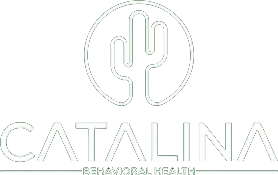Getting Answers About the Nature of Cocaine Addiction
Is cocaine a stimulant or depressant? In years past, this question was easily answered without many questions from users or even non-users.
From its root ingredient, the coca plant, cocaine is a natural stimulant formed using a crude breakdown process that turns portions of the plant into a paste that’s dried and marketed as the final product you see on the streets. It has an “upper” effect on the user, causing intense euphoria, among other side effects.
However, most recently, short-term cocaine users have found themselves in emergency rooms, or worse, after small doses are ingested. Users report lowered heartbeat instead of increased – their pupils are smaller instead of enlarged. Instead of staying awake – they’re falling asleep. Many questions arose as no stimulant drug should ever have these side effects – unless they’ve been adulterated.
Keep reading to understand more about the nature of cocaine, as well as find out more about accessible and effective treatment options with Catalina Behavioral Health in Arizona!
The Contamination of the Illicit Drug Supply
As recently as five years ago, the presence of synthetic opioids among illegal drugs was rare, but it has since become the rule rather than the exception, with deadly results nationwide.
Unfortunately, fentanyl has now begun popping up in the nation’s cocaine supply, adding another deadly element to an already dangerous game of drug abuse. This constant state of flux from up to down and back again puts users at risk of cardiac arrest, and ultimately death if the dose is large enough.
24 Hour Cocaine Detox and Rehab Helpline
The Nature of Cocaine and its Addictive Potential
In this guide, we’ll highlight the chemical makeup of cocaine, including why the drug is deadly enough on its own, minus the fentanyl or other dangerous additives.
Cocaine, a potent and notorious stimulant, has intrigued, enticed, and troubled humanity for decades. Its profound effects on the human body, both short-term and long-term, have given rise to a complex tapestry of pleasure, peril, and public health concerns.
Regular cocaine use and its related withdrawal symptoms are often poorly understood, even by those with substance use disorders themselves.
Our blog will aim to remedy this situation and delve deeply into the science behind cocaine, exploring its dual identity as a stimulant and the devastating physical and mental consequences it can bring.
How Does Cocaine Addiction Start?

At its core, cocaine is a central nervous system stimulant that causes an intense surge of energy, heightened alertness, and euphoria. Upon consumption, it interferes with neurotransmitter reuptake, particularly dopamine, norepinephrine, and serotonin.
By blocking the reuptake of these neurotransmitters, cocaine leads to their accumulation in the brain’s synapses, intensifying their effects and creating the characteristic “high,” leading to the heightened risk of drug abuse.
However, cocaine’s impact on the central nervous system makes this street drug incredibly dangerous – and in its altered form, crack cocaine – potentially THE most dangerous stimulant drug.
Short-Term Effects: Immediate Euphoria and Potential Catastrophe
The immediate impact of cocaine is undeniable. Users experience a euphoric rush, accompanied by increased heart rate, dilated pupils, and elevated blood pressure. This potent stimulant may also lead to heightened sensitivity to touch, sound, and light.
Users often feel a sense of confidence, invincibility, and intensified alertness, leading to a temporary escape from fatigue and stress. However, it’s the continued chase of these feelings that leads to rapid drug addiction, and higher doses are needed to achieve these feelings.
It’s at this point that most users turn to crack cocaine to continue feeding their cocaine addiction. So how does cocaine make it from the jungles of South America as the coca plant and into the streets where it’s one of the most purchased stimulant drugs on the market?
From Plant Leaves to Schedule II Drug
Cocaine’s chemical name is benzoylmethylecgonine, and its molecular formula is C17-H21-NO4. This formula highlights the compound’s carbon (C), hydrogen (H), nitrogen (N), and oxygen (O) atoms, arranged in a precise configuration to create its psychoactive properties that lead to stimulant abuse.
At its core, cocaine contains a tropane ring system, a bicyclic structure that forms the backbone of the molecule. This tropane ring is composed of a six-membered ring fused to a five-membered ring. Attached to this structure are various functional groups, including an ester group (C=O) and an aromatic benzene ring.
The Synthesis Process: From Coca Leaves to Cocaine

Cocaine is derived from the coca (Erythroxylum coca), which has been traditionally used by indigenous populations in South America for its stimulant effects. The synthesis of cocaine involves several complex chemical steps and typically requires specialized equipment and expertise.
Coca Leaf Extraction
The first step involves extracting the coca alkaloids from coca leaves. This is usually done using solvents like kerosene or gasoline. The resulting crude extract contains a mixture of alkaloids, including cocaine.
Cocaine Isolation
The crude extract is then subjected to further purification processes to isolate the cocaine alkaloid. This may involve processes like acid-base extraction or chromatography.
Cocaine Hydrolysis
The isolated cocaine is typically in the form of cocaine hydrochloride (cocaine HCl), a water-soluble salt. To create the freebase form of cocaine, a process called hydrolysis is performed. This involves treating cocaine HCl with a strong base, such as ammonia or sodium bicarbonate, to break the salt bond and liberate the freebase cocaine.
This is another dangerous variation of cocaine abuse and often leads to cocaine overdose.
The Conversion to Cocaine Hydrochloride
While the freebase form can be smoked, it’s less stable and more volatile than the hydrochloride salt. To create a more stable and usable form, the freebase cocaine is converted back to cocaine hydrochloride by reacting it with hydrochloric acid. This results in the white, crystalline powder commonly associated with cocaine.
Cutting and Packaging Cocaine
Illicitly produced cocaine is often “cut” or adulterated with other substances to increase its volume and profits. Common cutting agents include talcum powder, baking soda, or other white powders. The adulterated cocaine is then packaged for distribution.
It’s important to emphasize that the synthesis of cocaine involves dangerous chemicals and processes that can have severe legal and health consequences. The production and manufacture of cocaine are illegal in many countries due to its highly caustic nature and associated environmental risks.
For both ‘end users’ and producers, cocaine poses significant dangers and legal implications, underscoring the importance of addressing substance abuse through education, prevention, and treatment before it dismantles lives and even tears at the social fabric, as in Columbia and Mexico.
The Long Term Consequences of Cocaine Abuse

Despite the temporary euphoria, the insidious nature of cocaine becomes apparent with prolonged use. Physically, frequent use can result in cardiovascular complications, such as irregular heartbeats, increased risk of heart attack, and even stroke. Cocaine narrows blood vessels and strains the heart, which can have devastating long-term effects on the cardiovascular system.
Mentally, the picture is equally grim. Cocaine can induce anxiety, paranoia, and agitation, contributing to the deterioration of mental health. Additionally, the euphoric highs are inevitably followed by crashing lows, causing users to seek more of the drug to regain the initial pleasure. This cycle can spiral into addiction, where the user’s life becomes increasingly centered around obtaining and using cocaine.
Recognizing the perilous path cocaine can lead individuals down, it’s crucial to emphasize the significance of seeking help and treatment. Addiction to cocaine is a serious medical condition that requires professional intervention.
Detoxification, counseling, behavioral therapies, and support groups are essential components of recovery. Addressing both the physical and psychological aspects of addiction is vital to breaking free from the grip of cocaine’s allure, and both can be done effectively in Tucson, Arizona at Catalina Behavioral Health.
Get Accredited Treatment Options at Catalina Now!
Get Cocaine Addiction Treatment Options at Catalina
At Catalina, our robust selection of treatment methods and therapeutic techniques can ensure you get all of the assistance you need during and after treatment.
If you or someone you love are struggling with cocaine, we are here to help with cocaine rehab services that fully support your recovery.
For more information on our admissions process, contact our compassionate team at Catalina today!





